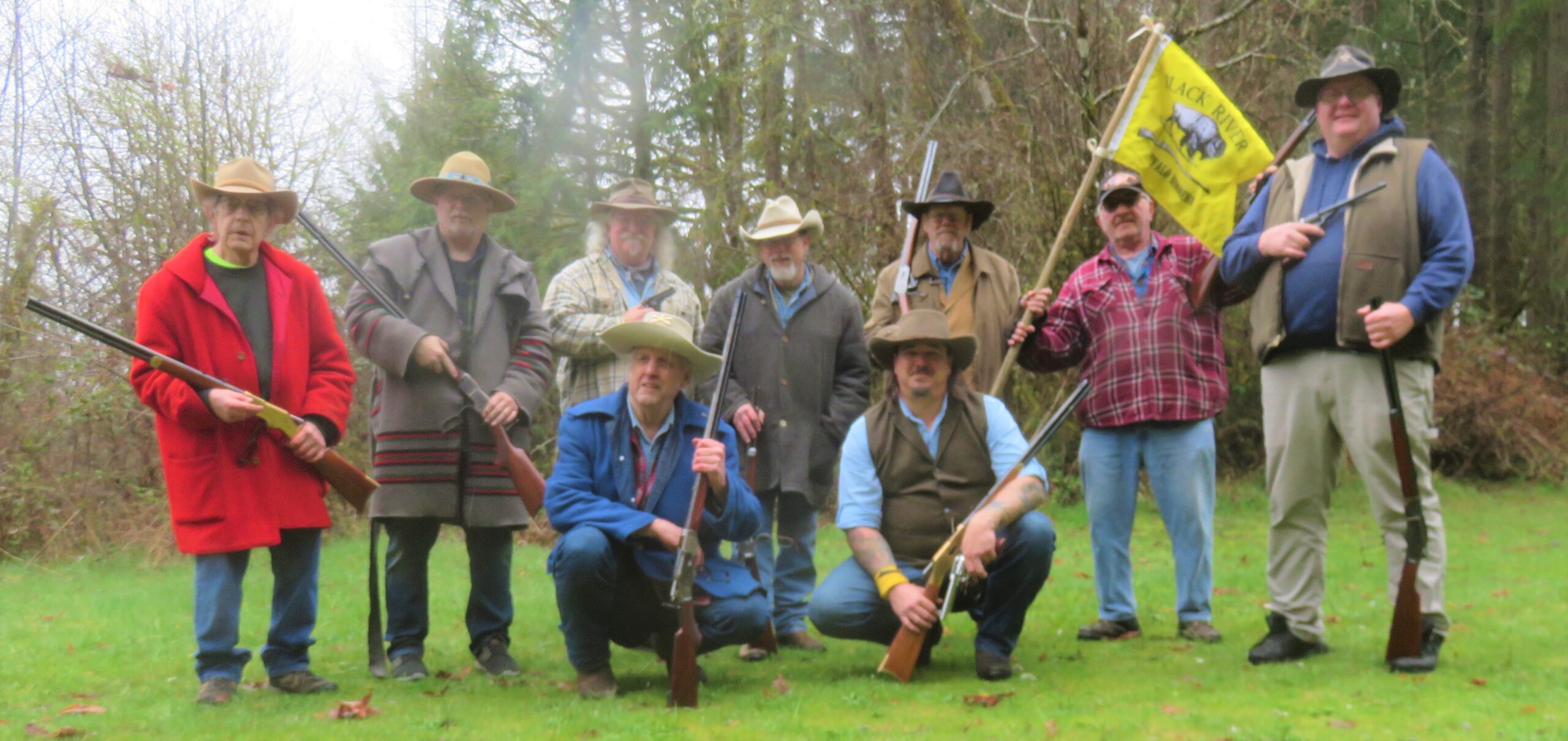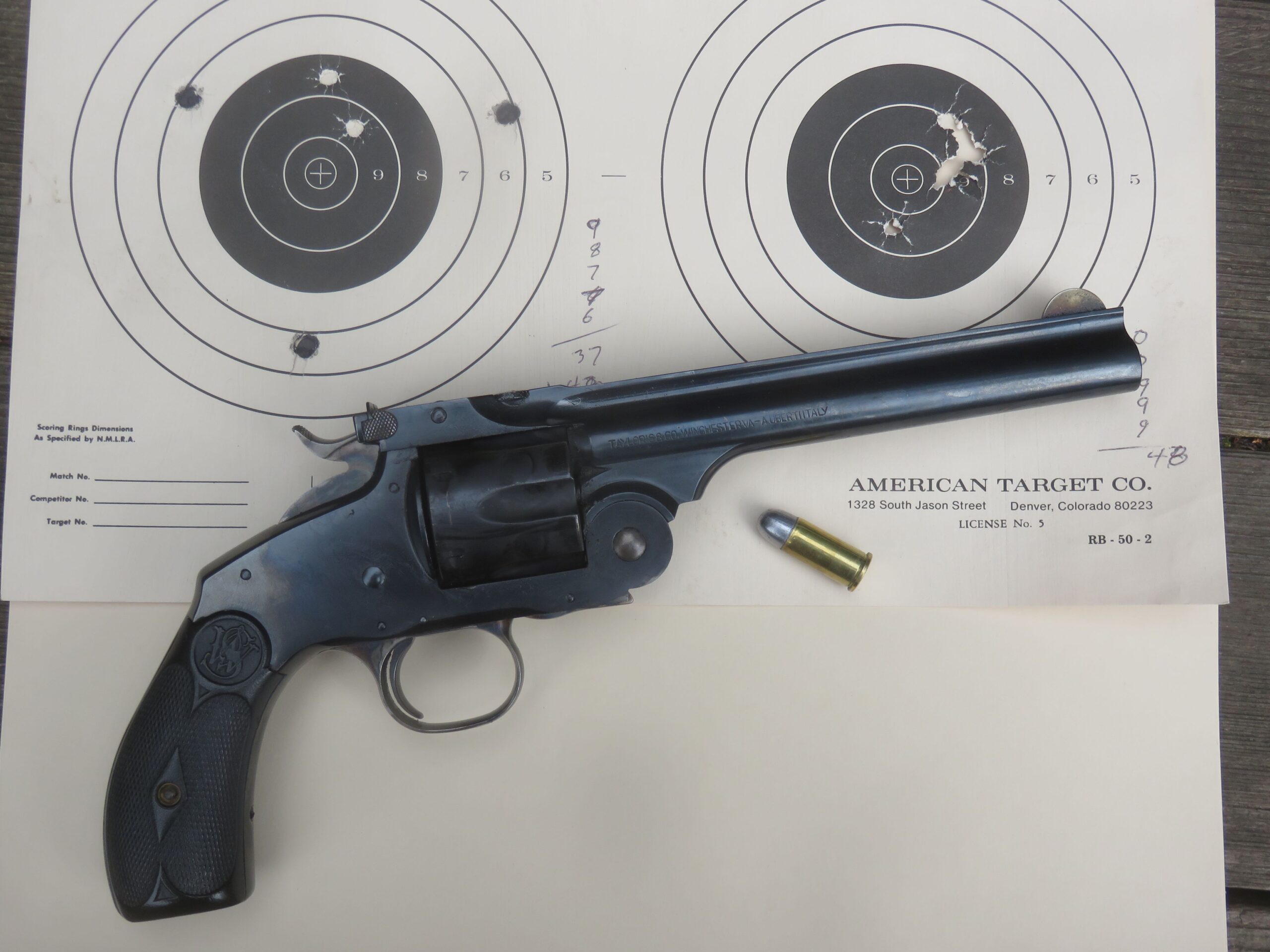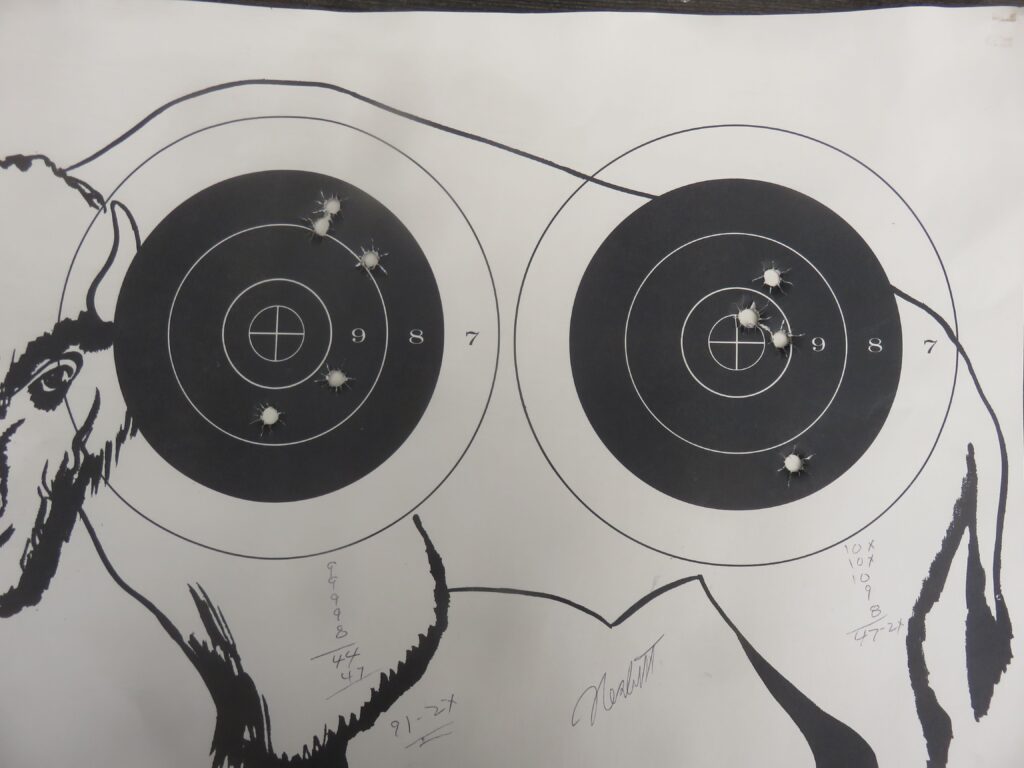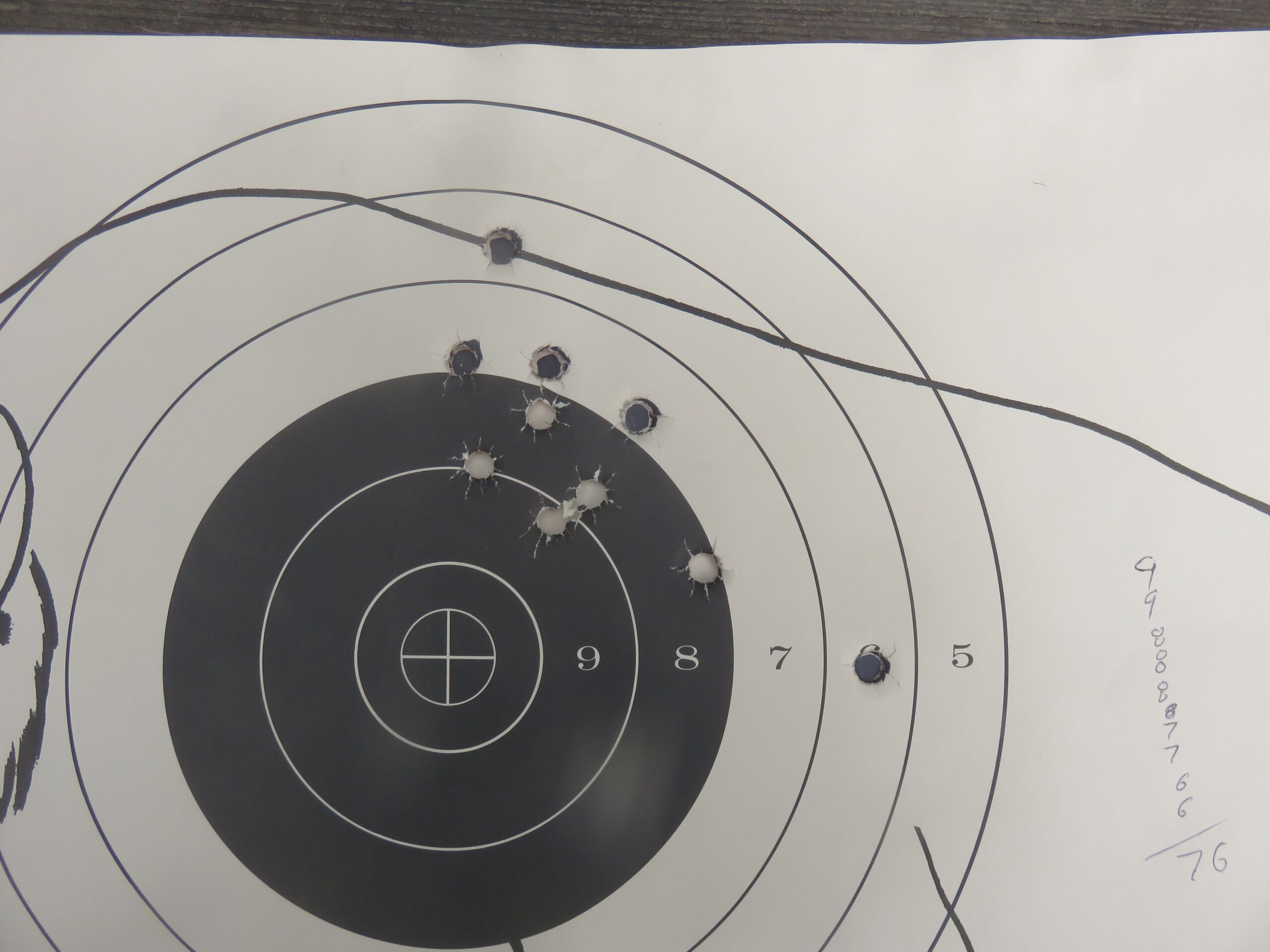
By Mike Nesbitt | Contributing Editor
There’s nothing really new about using black powder in lever action rifles.
After all, the very first repeating rifles which gained real popularity were lever actions in the second half of the 19th Century, and they all used black powder cartridges. I don’t intend to re-write history in a nutshell here but we can focus on the .44-40 Winchester, our first centerfire cartridge for a repeating rifle, and it was definitely a black powder cartridge. Now, what is rather new is how those .44-40 rifles, and guns in similar calibers, are being used today for use in some interesting shooting matches.
This is not an off-shoot from Cowboy Action shooting, although these two types of shooting are similar, mainly in the guns that are used. One big difference is that for the “Lever-Gun Matches” held by the Black River Buffalo Runners, down at the Capitol City Rifle & Pistol Club near Olympia, Washington, is that our Lever-Gun Matches require black powder loads while the cowboy action shooters consider black powder as an option. And the Lever-Gun Matches are usually not timed. Let me tell you more about them.

We, the Black River Buffalo Runners, just finished one of our shoots a few hours ago as this was written, so this event is still fresh in my mind. That makes the telling about it rather easy. But before getting specific about this match, you should know that we generally have these matches once per month and each match might have a different twist so that we don’t necessarily do the same things month after month.
The match director for these events is Tom Witt and for the match we just completed, he had us shooting at two paper targets, one at 50 yards and the other at 75 yards, for ten shots each. Then we fired ten more shots at gongs which were hung from 50 to 100 yards. That gave us a total of 30 shots, and those shots all went rather quickly.
The 30-shot relays made up what we call our daily aggregate. Then to add just a little more shooting, Tom called for an “after-aggregate match” to be fired with revolvers using black powder loads. This was done at another paper target, posted at just 10 yards, for 10 shots.

This very briefly describes the course of fire, which does little more than tell you how many shots we needed to complete our shooting. Now let me tell you about how the shooting was done at each of those targets. And, because it proved to be practical for the range we were using, we started out somewhat backwards by shooting the “after-match” first.
The reason we shot the after-match first was simply for our own convenience. Our targets were “posted” on ropes, top and bottom, and after the revolver match was completed, those ropes were taken down so they would not interfere with our rifle shooting at the longer distances. That was fine with all shooters, so we stepped forward, to a distance of about 12 yards, to shoot at the small targets which were brought especially for this match.
Those targets had two bullseyes with diameters of 2¾-inches, not terribly small and good for handgun shooting. I started on the left bullseye with five shots in my .44 Russian revolver, shooting 18½ grains of Olde Eynsford 2F powder under a 250-grain bullet, in an Uberti copy of the New Model #3 Smith & Wesson. Those five shots were disappointing but they also told me, in almost harsh words, to settle down and do it right. My second “group” of five shots, on the right-hand bullseye, were much better, scoring a 48 with three 10s and two 9s.
My score on the second bullseye did please me. And just after that match was completed, I found out that Jerry Mayo, shooting another .44 Russian revolver, had the same problem; his first score, on the first bullseye, was not the best and he improved very well on his second bullseye. A couple of Jerry’s shots were just a bit wider than mine and I was declared the winner by just two points, with my score of 85 taking the bows over Jerry’s score of 83.
Then those ropes were taken down and we started our Lever-Gun match. This was at the double bullseye buffalo targets, posted at 50 yards. With our rifles, we shoot from a sitting position while using cross-sticks which works very well for steady shooting.
The rifle I was using was my Uberti copy of the Model 1873 Winchester, in .44-40 caliber, with the 30-inch octagon barrel. My gun is equipped with a Lyman tang sight and my loads used 35 grains of Olde Eynsford 2F powder under the 205-grain bullets.
While shooting at the double bullseye buffalo target, putting five shots into each bullseye, I would load the rifle’s magazine with just five shots. That makes it easy to keep track of how many shots went into the first bullseye. After those five were fired, the magazine received five more cartridges and my shooting was continued at the second bullseye. My sight picture at the 50-yard target had me holding the front sight right at 6 o’clock, trying to put bullets into the X and 10 rings.

When that relay was done, we went forward to retrieve our targets and to post the next target at 75 yards. My shooting wasn’t too bad! This particular target was scored with a 44 on one bullseye and a 47-X on the other, for 91-X. I was quite pleased, my target placed second behind “Loco Jeff” Ritter who scored a 92-XX with his Model 94 Winchester in .38-55. Jeff told me what his load was, quite a few weeks ago, and I think he is still using 40 grains of black powder under a 250-grain bullet for his good shooting load.
For my ten shots at the 75-yard target, also fired from the sitting position while resting the barrel of the rifle over cross-sticks, I held about halfway into the black, expecting the bullets from the old .44-40 to drop just a bit because of trajectory. Again, I loaded the magazine with just five rounds and when those were gone, I loaded with five more. The reason for that is because if, for any reason, a cease-fire had to be called, my rifle could be unloaded much easier and quicker. No cease-fire commands were necessary and soon enough, the 75-yard target was being retrieved.
That’s when I saw that my hold, or sight picture, on the 75-yard target should have been at 6 o’clock too. The .44-40’s trajectory is flatter than I thought, at least for the first 100 yards. (Maybe I was thinking the .44-40 was like a muzzleloader shooting a round-ball, where the added 25 yards will show). My group was pretty good but it was just half a bullseye’s width high, giving me a score of 76. While that isn’t too bad, Jerry Mayo out shot me with an 81, using his ’66 in .44-40, and Ritter beat us all with a very good score of 87 with his .38-55.
The outcome of this match was basically already settled but there was one more division of the morning’s match yet to be shot. That was ten more shots at hanging gongs, offhand, with targets at 50 and 100 yards. There were five gongs, with an option at 100 yards for a large or a small gong and each of those targets were to be shot at twice. We were more or less on our honor as far as hits and misses were concerned but even so, I teamed up with Dan Johnson for a witness. Dan was also shooting a ’73 copy in .44-40. He’d witness my shots then I’d witness his. I remember that I finished with eight hits and Dan finished with seven.
Bob DeLisle was the top shooter on the gongs. He hit nine out of the ten while using his old original Winchester Model 1892 Short Rifle in .32-20 caliber. He proved that it doesn’t take a big bore to make those steel gongs ring.

The reward for this match was mainly the amount of fun we had. Other prizes included “the pot” for the revolver match. Everyone who enters the “after-match” pays and extra $1 and that simply goes into the “pot.” The after-match winner takes the pot. There are no awards for placing second or third in the after-match.
For the lever-gun match we do award the top three places, and in addition to that, all shooters receive a prize in the order of their scores. In this match, Jeff Ritter took first, Jerry Mayo placed second, and I placed third. Awards for those placements were meat prizes and the prize that was left for me was a package of little smokies. Then the list of all the shooters was read, with Jeff Ritter in the lead again, and this time the prizes really varied from shooting accessories to more pieces of meat. The prize I got this time was a good-looking summer sausage.
Those meat prizes did add to the ‘flavor’ of the shoot and this black powder lever-gun match was certainly a very good, relaxing, and fun way to spend a Saturday morning with some recreational shooting. We try to do this once per month and we’re all looking forward to the next one.



